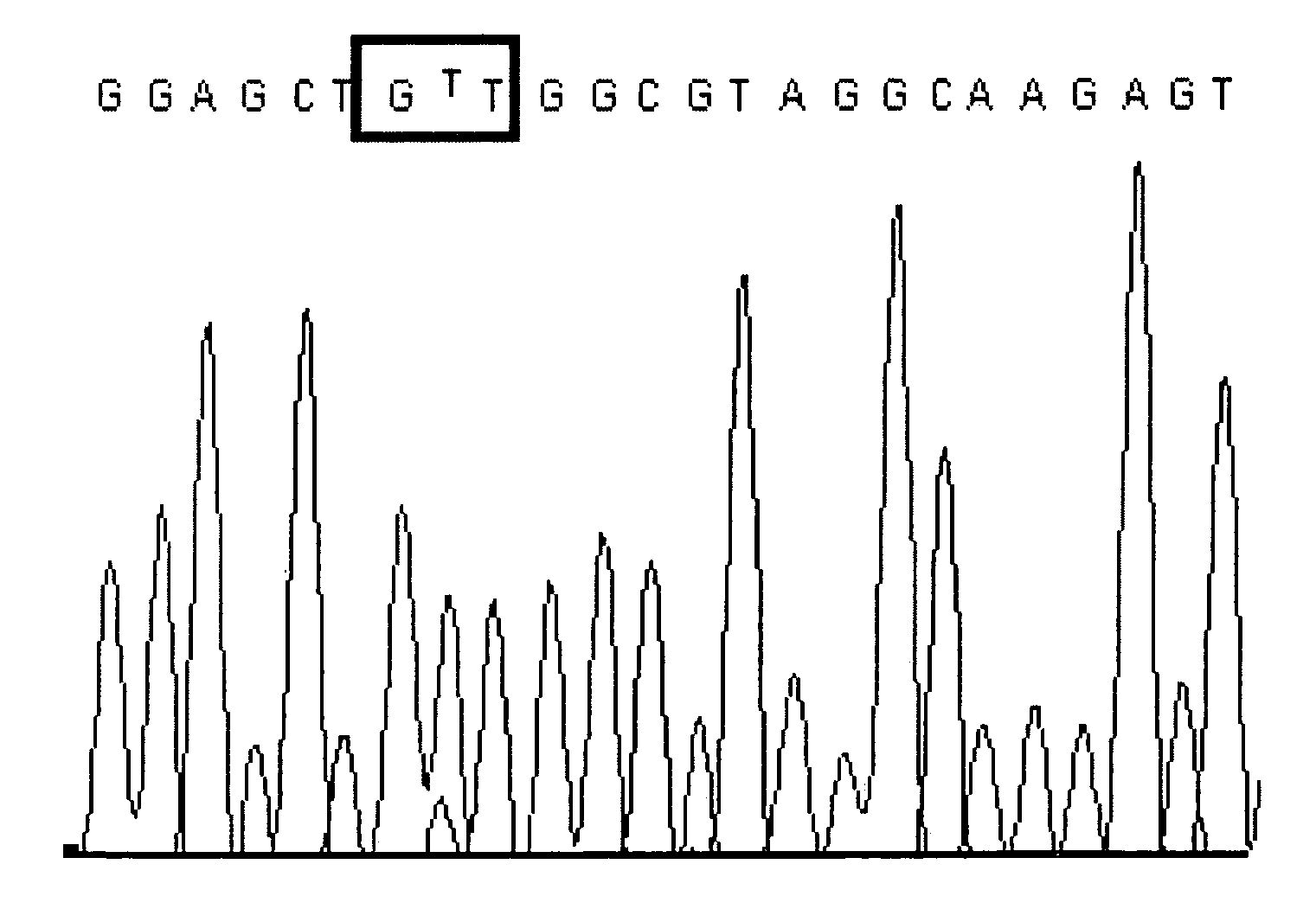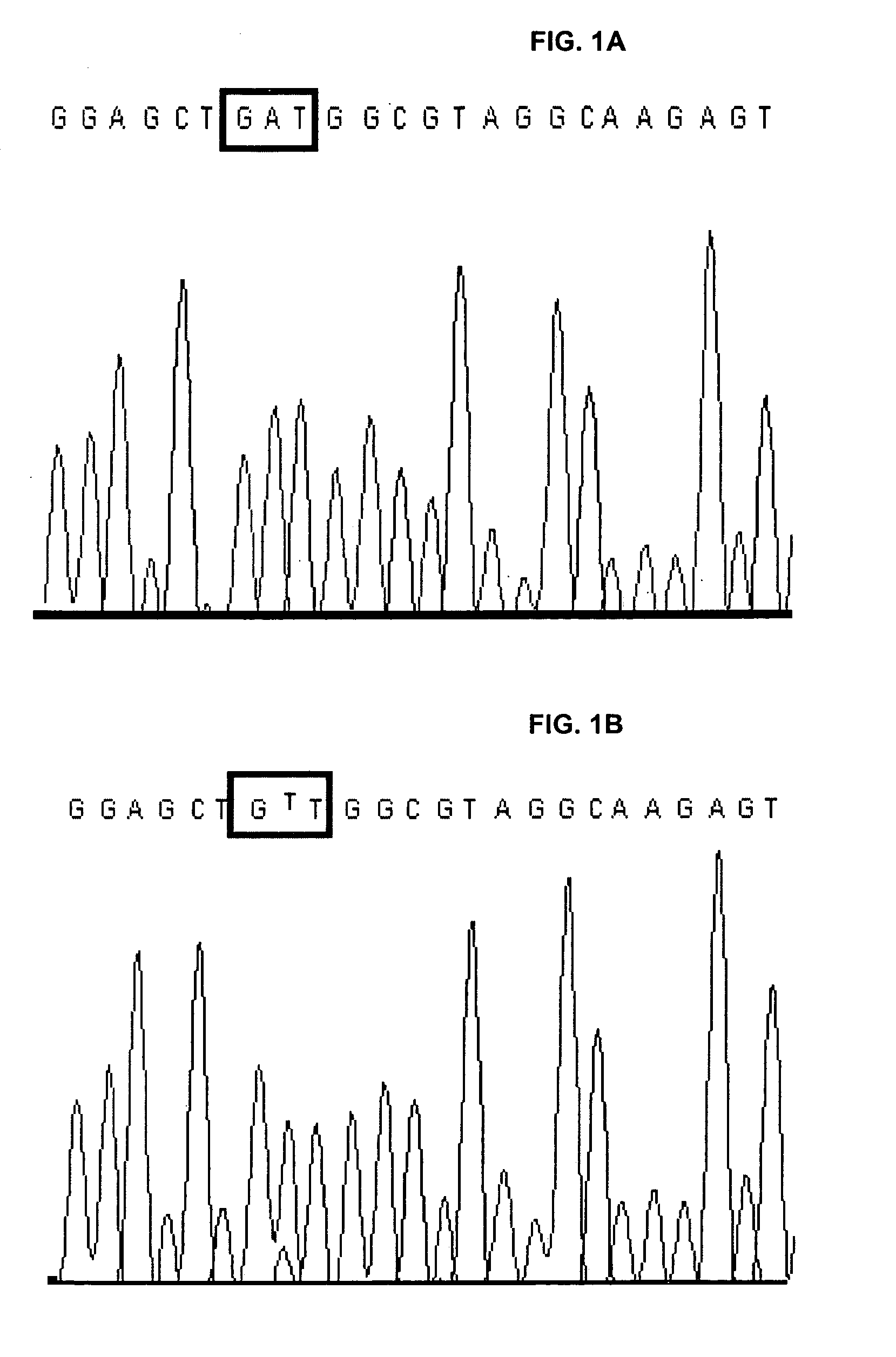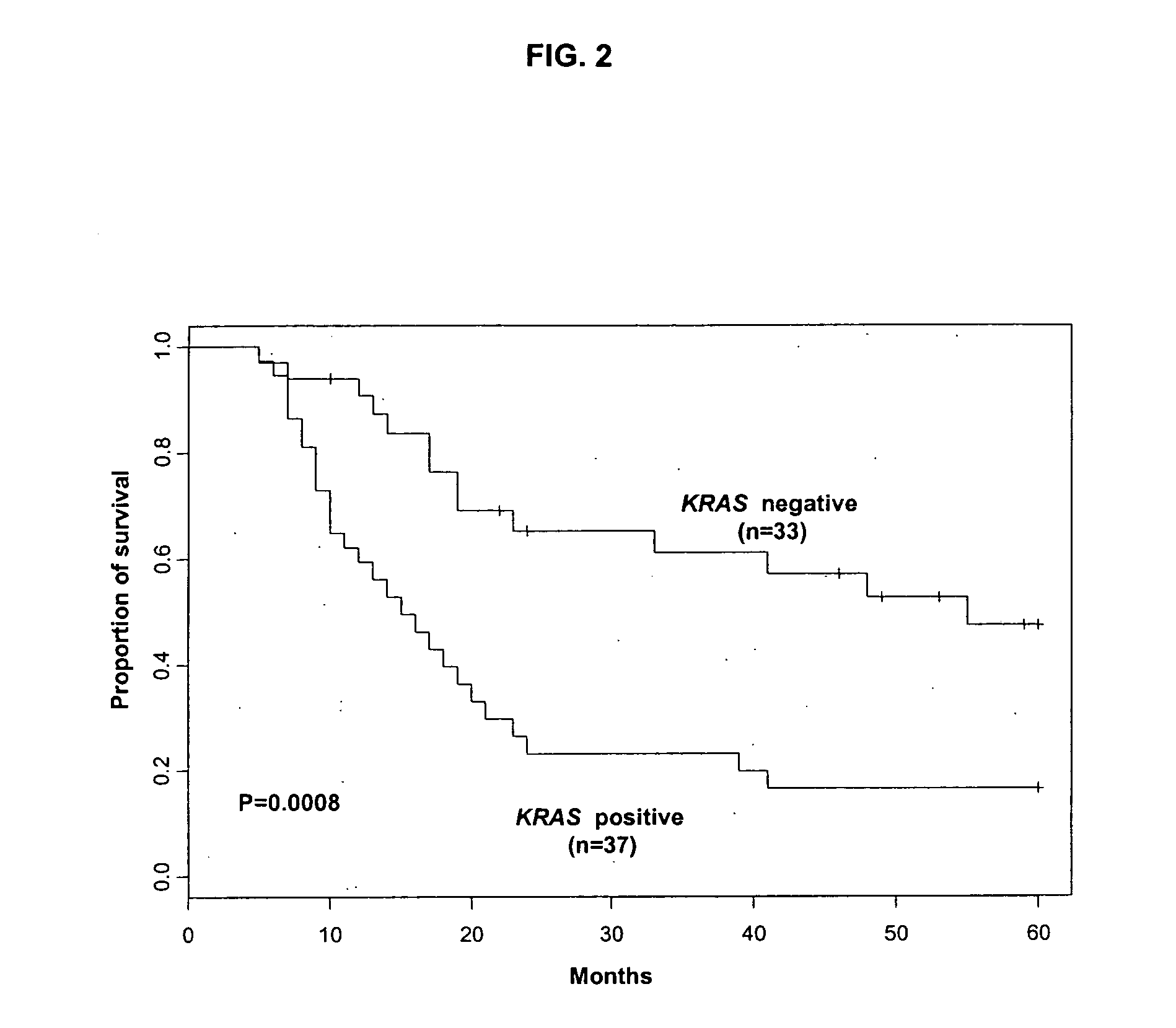Molecular/genetic aberrations in surgical margins of resected pancreatic cancer represents neoplastic disease that correlates with disease outcome
- Summary
- Abstract
- Description
- Claims
- Application Information
AI Technical Summary
Benefits of technology
Problems solved by technology
Method used
Image
Examples
example 1
Patients and Methods
[0109] Patients with pancreatic cancer. Twenty-three patients who underwent curative resection for PDAC from 1996-2004 were initially evaluated as a pilot cohort for this research study. Patient specimens were obtained from John Wayne Cancer Institute (JWCI) and UCLA School of Medicine (Los Angeles, Calif.). After completing analysis of the pilot cohort, 47 additional patients who underwent surgery for PDAC were accrued. Only patients with an adequate follow-up interval (i.e., ≧36 mos or until expiration) were selected. Patients were excluded if the final permanent section of either surgical margin (pancreatic transection or retroperitoneal) was histopathology positive by H&E, if either margin was unavailable for analysis, or if the patient died within 30 postoperative days. All patients, regardless of stage or nodal status, were offered adjuvant chemotherapy with combinations of 5-fluorouracil, leucovorin, mitomycin C, dipyridamole, and gemcitabine. Patients we...
example 2
Results
[0117] PNA PCR accuracy. The accuracy of the PNA clamp method was previously assessed in KRAS-positive (n=16) and KRAS-negative (n=17) PEAT colorectal cancer specimens (Balcom et al., 2001). The sensitivity of the assay was determined by detection of KRAS mutation in micrometastatic (Greene et al., 2002) colorectal cancer lymph node lesions. For all 33 cancer specimens, direct sequencing validated the results of the PNA PCR™ assay, illustrating 100% specificity and sensitivity (Taback et al., 2004). This previous study utilized PCR™ amplification of KRAS mutation followed by a semi-quantitative, electrochemiluminescent assay to detection the KRAS mutation. The current study was adapted to utilize the same KRAS PCR™ primers, PNA, and amplification conditions on a more efficient, sensitive, and high-throughput, real-time quantitative PCR™ platform. To validate the accuracy of the real-time PCR PNA clamp assay, the inventors analyzed 16 representative KRAS-positive (n=8) and KR...
example 3
Discussion
[0121] The value of obtaining histopathologically negative surgical margins has been borne out from subset analyses of large cohort reviews and randomized controlled trials evaluating treatment for PDAC (Yeo et al., 1997; Neoptolemos et al., 2001; Balcom et al., 2001). The inventors used PCR™ to detect KRAS mutation in surgical margins of over half the patients (53%) in this study cohort, all of whom had negative H&E histopathology. Correlation of KRAS margin status with clinical outcome demonstrated significant difference in overall survival. These findings suggest that intraoperative determination of surgical margin adequacy is not sensitive to identify relevant genetic aberrancies of PDAC that may be present as field defects or occult neoplastic cells.
[0122] A high rate of locoregional recurrence and concomitant short survival support the existence of field cancerization or occult spread of neoplastic cells in PDAC. In order to correlate PCR™ detection of KRAS mutatio...
PUM
| Property | Measurement | Unit |
|---|---|---|
| Time | aaaaa | aaaaa |
| Time | aaaaa | aaaaa |
Abstract
Description
Claims
Application Information
 Login to View More
Login to View More - R&D
- Intellectual Property
- Life Sciences
- Materials
- Tech Scout
- Unparalleled Data Quality
- Higher Quality Content
- 60% Fewer Hallucinations
Browse by: Latest US Patents, China's latest patents, Technical Efficacy Thesaurus, Application Domain, Technology Topic, Popular Technical Reports.
© 2025 PatSnap. All rights reserved.Legal|Privacy policy|Modern Slavery Act Transparency Statement|Sitemap|About US| Contact US: help@patsnap.com



